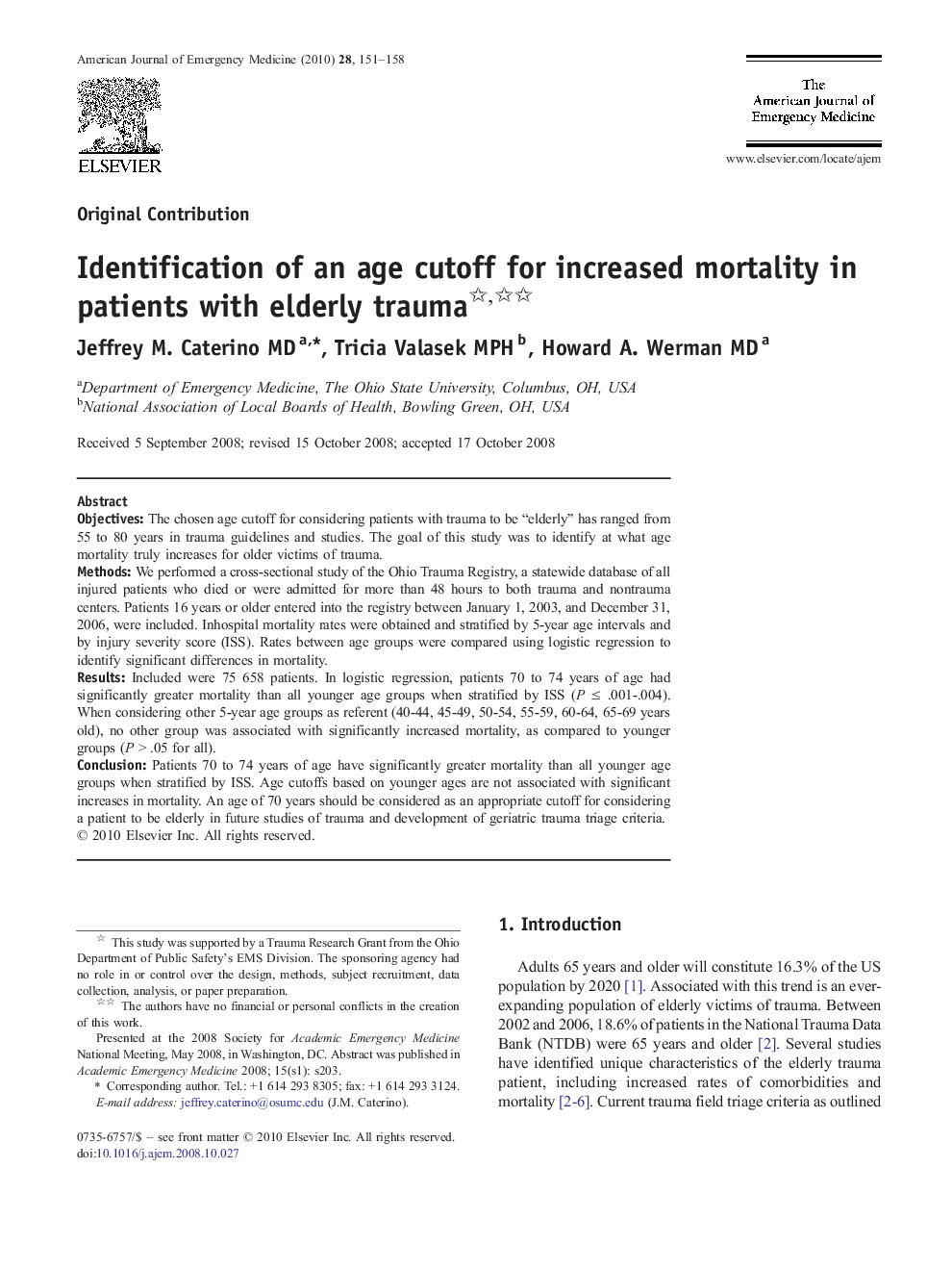| Article ID | Journal | Published Year | Pages | File Type |
|---|---|---|---|---|
| 3226915 | The American Journal of Emergency Medicine | 2010 | 8 Pages |
ObjectivesThe chosen age cutoff for considering patients with trauma to be “elderly” has ranged from 55 to 80 years in trauma guidelines and studies. The goal of this study was to identify at what age mortality truly increases for older victims of trauma.MethodsWe performed a cross-sectional study of the Ohio Trauma Registry, a statewide database of all injured patients who died or were admitted for more than 48 hours to both trauma and nontrauma centers. Patients 16 years or older entered into the registry between January 1, 2003, and December 31, 2006, were included. Inhospital mortality rates were obtained and stratified by 5-year age intervals and by injury severity score (ISS). Rates between age groups were compared using logistic regression to identify significant differences in mortality.ResultsIncluded were 75 658 patients. In logistic regression, patients 70 to 74 years of age had significantly greater mortality than all younger age groups when stratified by ISS (P ≤ .001-.004). When considering other 5-year age groups as referent (40-44, 45-49, 50-54, 55-59, 60-64, 65-69 years old), no other group was associated with significantly increased mortality, as compared to younger groups (P > .05 for all).ConclusionPatients 70 to 74 years of age have significantly greater mortality than all younger age groups when stratified by ISS. Age cutoffs based on younger ages are not associated with significant increases in mortality. An age of 70 years should be considered as an appropriate cutoff for considering a patient to be elderly in future studies of trauma and development of geriatric trauma triage criteria.
